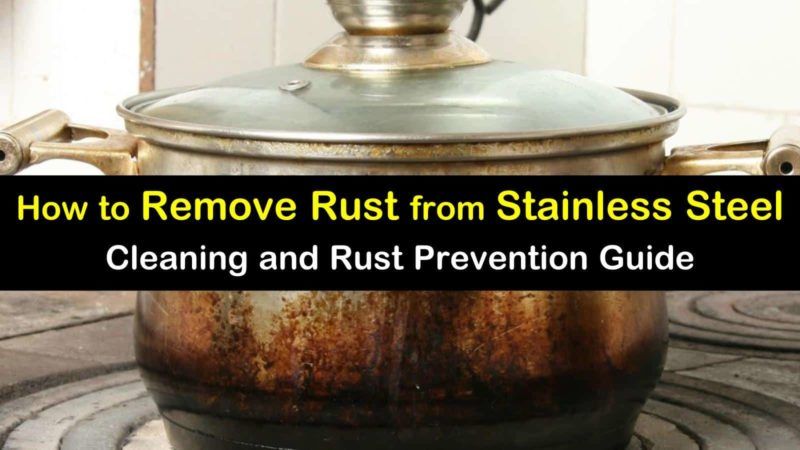Rust shows up on both old and newer tire rims, and while rims are painted and finished to avoid rusting, the process isn’t always effective.
Therefore, if you have rust on your rims, perhaps you’re wondering how to remove it. If you’d like to find out, keep reading to see what I gathered on this topic!
When removing rust, you first have to wash the rims with hot water and soap and scrub with a brush to remove as much of the rust as possible. If it still sticks around, you’ll likely need to invest in a rust-removing cleaner. However, there are also many DIY options available such as vinegar.
For information on different chemicals to use in removing rust from tire rims, as well as great commercial options for rust remover, keep reading for more useful facts!
When a tire rim is rusted, that portion of the rim has likely turned into rust. Therefore, if the majority of your rim is covered in rust, then you will likely be unable to save it. However, you may attempt to use a rusty-metal primer to save the metal.
If the wheel is quite rusty, you may be able to use a rusty-metal primer, which will prepare the metal for scrubbing.
However, if the rim is only somewhat rusted, you may be able to scrub it with some hot water and degreasing soap. Once you get all the rust off, be sure to protect the wheel with a shine.
As well, you may need to use brake dust for rust that is tougher to remove. A wire brush is often necessary to remove the rust completely, and afterward you can buff the rim with a microfiber cloth to bring the shine back and remove the last of the rust.
In some cases, you may need an acid-based cleaner, which you can find at most auto shops.
However, you may be able to hire a professional detailing company at this point, since rims that contain an excessive amount of rust are often much more difficult to clean.
Nevertheless, if you decide to use an acid-based cleaner, be sure to follow the directions carefully, otherwise, the cleaner may not work completely.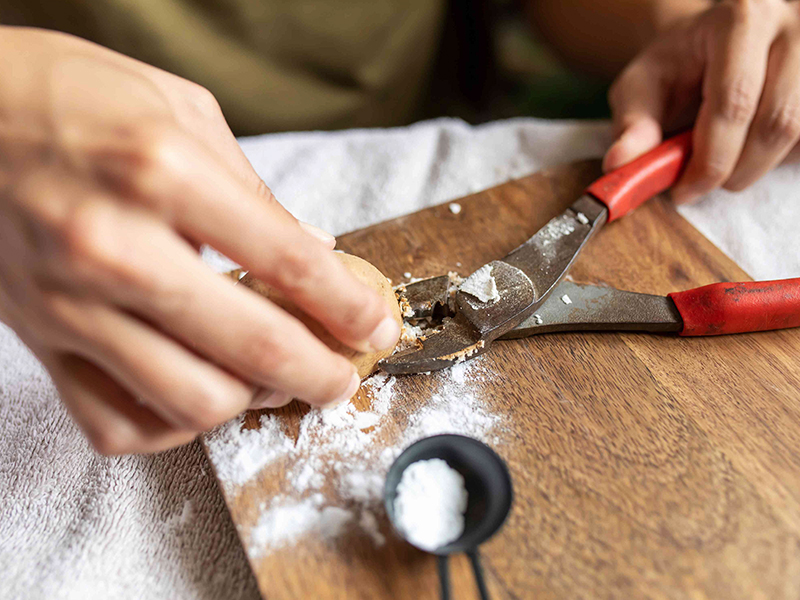
For rims that are completely rusted, you may need to use a sandblaster, as the heavy sand will remove the rust without damaging the metal.
In most cases, you can purchase a sandblaster, though they’re generally quite expensive. Instead, you may want to see if you can rent one.
Furthermore, you should plan on refinishing and repainting the rim afterward, as a sandblaster will remove both rust and paint.
Vinegar removes rust by reacting with the rust and allowing it to dissolve. In fact, vinegar is often just as or more effective than some commercial options.
In order for the vinegar to react with the rust properly, the tire rims will need to soak, meaning you’ll need a large amount of vinegar.
On some occasions, toothpaste can remove rust, though it’s not nearly as effective as some other options. Instead, toothpaste is best for removing rust on small items, such as silverware and tools.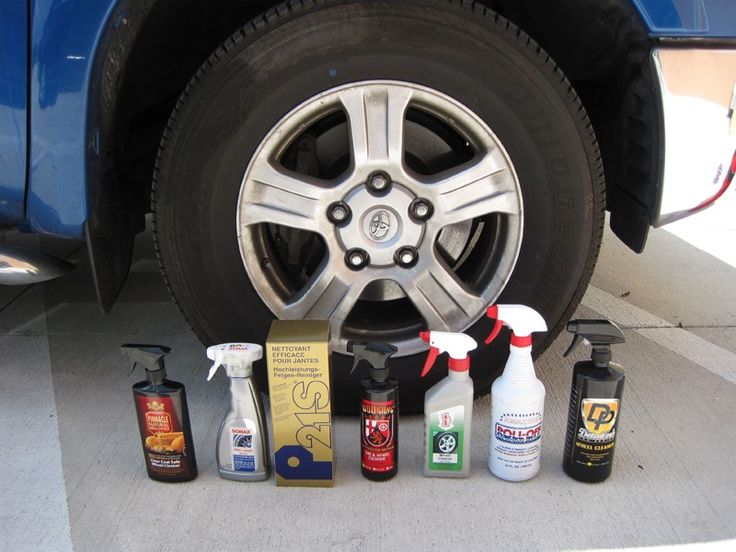
If you wanted to use toothpaste on rims, you’d need to invest in a lot of toothpaste, and in many cases, using toothpaste is more expensive than using a commercial product, since you’d need so much of it.
However, if you choose to use toothpaste, the best option is white, non-gel toothpaste.
In many cases, this method works best when you only have a small spot of rust you need to remove, because if you apply rust to the whole rim, the process will likely be quite slow.
While regular WD 40 won’t get rid of rust, the same company does make a specialty product to get rid of rust, which dissolves rust fairly quickly and can be used on bare metal.
According to most reports by previous customers, this product is very effective, meaning it’s a solid option if you want to remove rust from your rims.
In many cases, hydrogen peroxide can actually speed up the rusting process.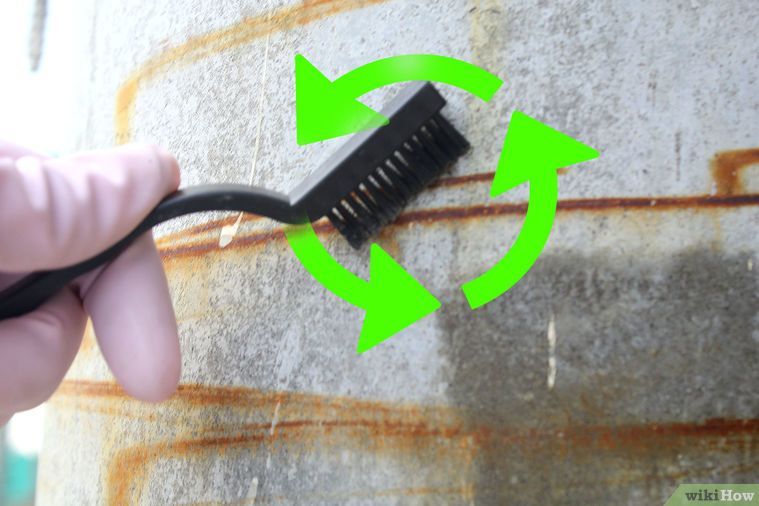 Therefore, it isn’t the best option for rusty rims. However, you can sometimes utilize hydrogen peroxide to remove rust if you follow some careful steps:
Therefore, it isn’t the best option for rusty rims. However, you can sometimes utilize hydrogen peroxide to remove rust if you follow some careful steps:
Note that while the above method does work, it only works on moderately rusty items, and can only remove light rust and rust stains in most cases.
To know more about cleaning tires, you can also see our posts on homemade tire shine, how to clean whitewall tires, and how to soften tires.
While you can remove rust from most rims, the extent of the rusting is critical. If there is only one spot of rust, removing it is relatively simple, but if the majority of your rim is covered in rust, the process is more complicated.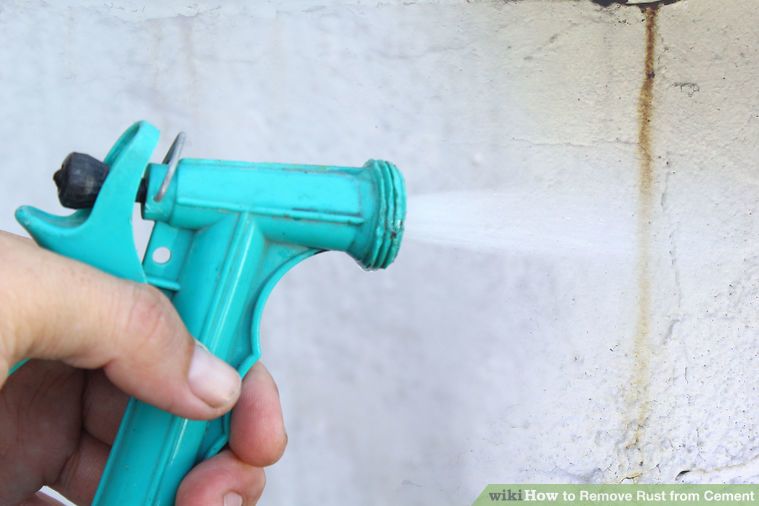
However, there are several DIY options for removing rust, as well as commercially available options. Overall, DIY options work just as well as commercial options when you use them correctly.
Rusted car rims look terrible, and they can end up costing you quite a bit of money. If you’re tired of replacing your rims and fighting rust every season, you’re in the right place. Removing rust can be done with a simple 8-step process without breaking a sweat or spending too much money.
To get the rust off car rims, start by cleaning the tires, drying them out with rubbing alcohol, and scrubbing the rust with a wire brush. Apply a rust converter to strengthen the surface, then polish the rims with a converting agent. When you’re all done, add a protective coating to seal the rims.
Throughout this article, you’ll also learn the following information about rusted car rims:
Contents
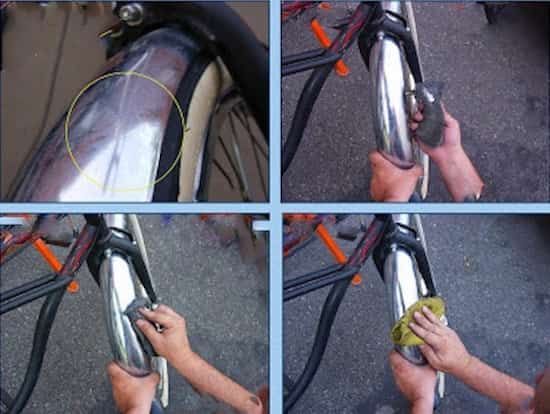 Clean the Rims and Tires
Clean the Rims and TiresCleaning your rims and tires will free up debris to allow for a solid seal. You’ll be using protective coatings, brushes, and other products that all require a clean surface. Use a stiff brush to scrub away the debris. Make sure that you’re also adding Car Guys Wheel and Tire Cleaner to remove the dirt and brake dust.
For a helpful video about the importance of cleaning your rims and tires, follow this guide by Saabkyle04 on Youtube:
It’ll give you brief instructions to clean your tires and remove rust in a matter of minutes.
Note: Brake dust can darken, which makes it appear as rust. The video above mostly removes old brake dust, but it details how you can prep your rims for the following steps.
When the rims are clean, use rubbing alcohol on a soft cloth to dry out the excess moisture. There will undoubtedly be water left behind from cleaning the rims, so drying them off with a towel and alcohol is the best course of action. Don’t forget to dry off the tires as well to prevent them from dripping down onto the rims.
You’ll need to use rubbing alcohol several times throughout these instructions. Have a bottle handy, as well as three or four clean, lint-free towels to dry the rims when it’s necessary. Microfiber is the best material for automotive parts, but traditional semi-abrasive towels will also do the trick.
Next, use a wire brush to scrub the rims. Any rust that remains will likely be removed with firm circular motions. Never scrub too hard; Otherwise, you could risk scratching the rims of your car. If you find any chunks of rust that go deep into the rims, leave them behind and proceed to the next step.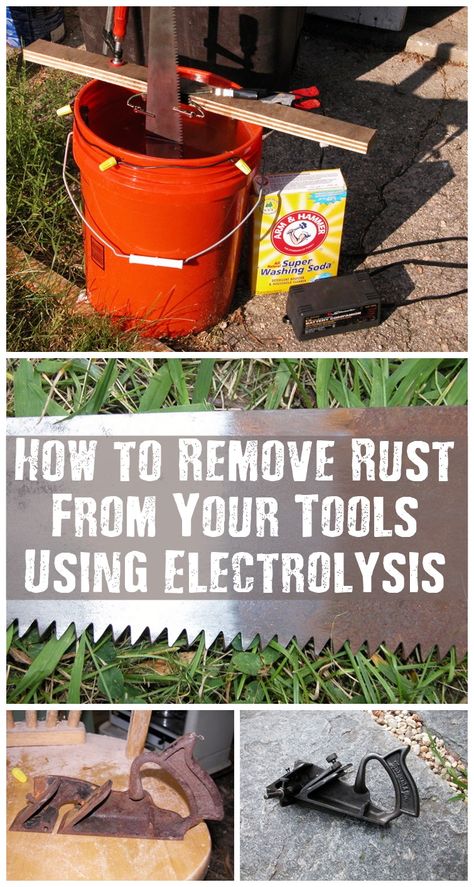
You can also use different types of automotive acid to strip rust. However, you’ll need the proper tools and clothing for the job. Failure to follow strict guidelines could damage your rims and tires. The good news is that these instructions won’t cause any harm, as long as you follow them step-by-step.
Adding a rust converter to rust that gathers along porous rims can preserve structural integrity. Rust converters work by turning the rusted portion of a rim into usable metal coated with protective sprays and paints to expand your rims’ longevity.
XIONLAB’s 2-in-1 Rust Converter and Metal Primer changes your rusted rims into new, shiny rims while also preparing them for paint and protective coatings. It comes in a can that you can attach a sprayer to, allowing you to apply the chemical to your rims in a matter of seconds. You can purchase this product in a one-gallon container or smaller pints.
When the rust converter dries, apply more rubbing alcohol with a fresh, clean cloth or towel. If you don’t follow this crucial step, you could risk trapping moisture in the seams of the previously rusted areas. Work in circular motions, ensuring that the alcohol dries before you start moving onto the next steps.
If you don’t follow this crucial step, you could risk trapping moisture in the seams of the previously rusted areas. Work in circular motions, ensuring that the alcohol dries before you start moving onto the next steps.
Note: Always apply the rubbing alcohol to the towel, then rub it against the rim. In other words, don’t pour the alcohol directly onto the rims. You’ll end up using way more than you should, wasting your money and extending the drying time frame.
Once the alcohol has dried, polish the converter parts of the rims with a fine steel wool brush. Make sure it’s not too abrasive, and be gentle when you’re performing this step. Again, you shouldn’t apply too much pressure if you want to prevent scratches and structural damage. Note that soft, fine steel wool won’t scratch too easily.
If you’re concerned about scratches, you could also use a scouring pad. Although it’s not as effective, you’ll still be able to buff out the surface enough to prepare it for the final step of adding a protective coating. The goal with this tip is to make the rim look level from edge to edge.
The goal with this tip is to make the rim look level from edge to edge.
When you’re all done cleaning, scrubbing, drying, and doing all of the other steps, it’s time to finish the rims with a protective coating. Without recommending any brand specifically, you should always contact the manufacturer of the rims to figure out which paint code or preventative you should use.
Every set of rims has their own recommendations. You might need to spray or paint them, but never leave them untreated. In most cases, you’ll be able to find the necessary instructions and recommendations by calling the car dealership that you bought the vehicle from or by researching the rims online.
Now that you’ve completed the whole process, some people prefer to go back and repeat everything over again. While it’s not entirely necessary, repeating the steps is a good way to ensure your rims’ longevity.
However, you shouldn’t scrub the rims with anything too abrasive.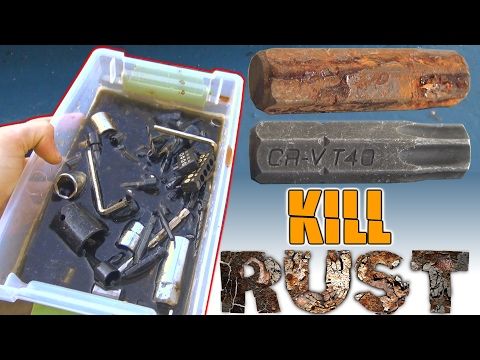 If you’re set on repeating the steps, just follow the final three. Dry them with alcohol, polish them with a wire brush, and add another layer of the protective coating.
If you’re set on repeating the steps, just follow the final three. Dry them with alcohol, polish them with a wire brush, and add another layer of the protective coating.
Note: Some coatings require a second or third layer, so make sure you know the instructions prior to repeating any of the steps.
Unfortunately, some rims are too damaged to be saved. If your rims aren’t responding to the treatment mentioned above, you might want to consider getting a new set. Before you start buying new rims to replace the old, rusted ones, check out the four possible signs that it’s time to replace your rims.
 This issue often calls for professional assistance. Although it’s not always a cause for replacement, you’ll want to have them checked out before you start driving on the road again.
This issue often calls for professional assistance. Although it’s not always a cause for replacement, you’ll want to have them checked out before you start driving on the road again.If the bolts on your rims are rusted, you should remove them, treat the rust, and consider getting replacements. There’s no point in reusing bolts that have been stripped by rust since they won’t hold the rims or hubcaps together.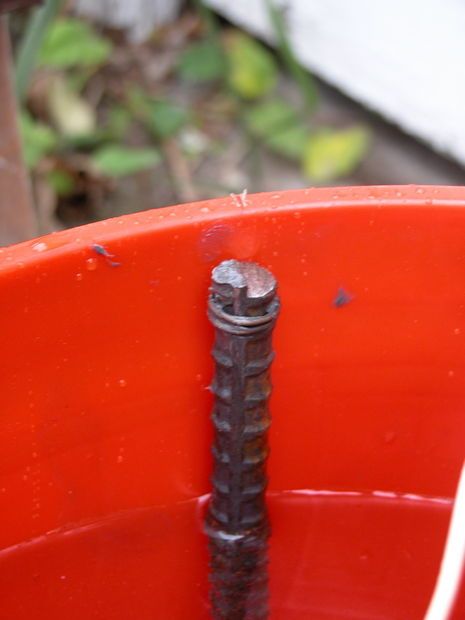 You can get a new set for only a few dollars, and they could end up saving your rims.
You can get a new set for only a few dollars, and they could end up saving your rims.
Rusted rims can cause severe problems for your vehicle. As you’ve seen throughout this article, you can treat and prevent rust from coming back with a few simple steps. There’s no need to hire a professional or spend all of your money. Instead, you can scrub them down and use the product recommendations in less than an hour.
Here’s a quick recap of the post:
Car Tire and Wheel Care
“He is not a gentleman who does not take care of his shoes,” says a wise English proverb.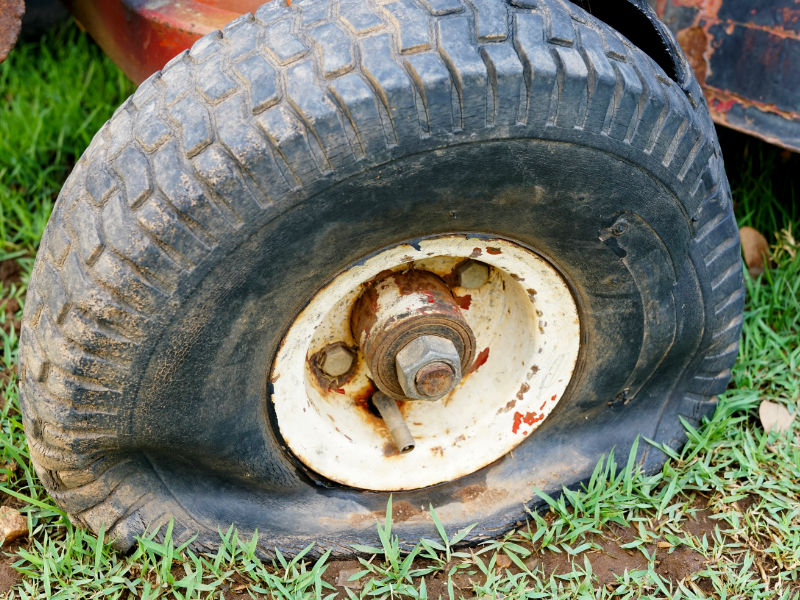 Indeed, appearing in public in dirty shoes is not a sign of good taste or, as they say, not comme il faut.
Indeed, appearing in public in dirty shoes is not a sign of good taste or, as they say, not comme il faut.
And needless to say, today the validity of this simple truth also fully applies to the shoes of your car - tires and rims, which, performing both a functional and decorative function, need care no less than stylish shoes or half boots.
Currently, the product range of all well-known manufacturers of car cosmetics includes a wide range of products for caring for wheels and keeping them in perfect technical and aesthetic condition - the so-called tire blackeners and rim cleaners. Samples of each of the types of these products will be discussed in this article.
It's no secret that tires lose their performance and external elegance over time. The presence of microcracks, tarnishing, loss of elastic characteristics - these and other negative manifestations during long-term operation of tires without proper care in no way contribute to the preservation of their working properties and external attractiveness. All tire microdefects arising under the influence of adverse atmospheric and road factors will help to prevent and eliminate this RW-64 tire ink from the ReinWell trademark, popular on the domestic market.
All tire microdefects arising under the influence of adverse atmospheric and road factors will help to prevent and eliminate this RW-64 tire ink from the ReinWell trademark, popular on the domestic market.
The main advantages of the product are:
1. speed and efficiency of action;
2. restoring the appearance of surfaces to new condition;
3. deep black with a "wet" matte finish;
4. the formation of a strong protective film that prevents dust and dirt exposure and subsequent cracking;
5. softening and maintaining elasticity, preventing aging;
6. protection against UV rays and corrosive agents of the road surface;
7. Protected against frost cracking in the winter season.
RW-64 Tire Blackener is available in 500 ml aerosol packs: this amount is enough for a one-time treatment of all wheels and other parts of the car that need it. The product is applied to a dry treated surface by spraying and rubbed into it with a microfiber cloth until the desired effect is obtained.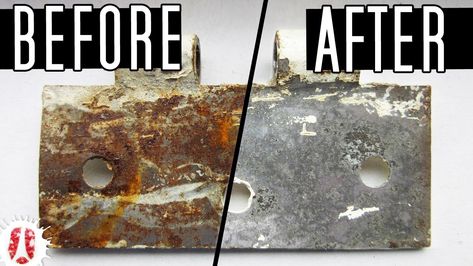 Excellent tire protection guaranteed!
Excellent tire protection guaranteed!
At the same time, a very significant and useful circumstance is that using this product you can take care not only of tires, but also of other rubber-containing and plastic components: bumpers, moldings, radiator lining, mudguards, floor mats, seals, door mirror covers, hoses, etc.
Cleaning rims with a cleaner
Automakers today equip most modern passenger cars, not only prestigious, but also budget brands, with cast or forged rims, for the manufacture of which alloyed stainless steel or light aluminum alloys are used. Such discs are also in high demand in car dealerships due to their external attractiveness and the presence of many useful technical characteristics. At the same time, such products, being very material-intensive and produced using high technologies, are not at all cheap.
At the same time, rims, being among the most contacting parts of the car with the road surface, are subjected to intense abrasive and chemical attack, as a result of which they need regular cleaning and constant preventive care.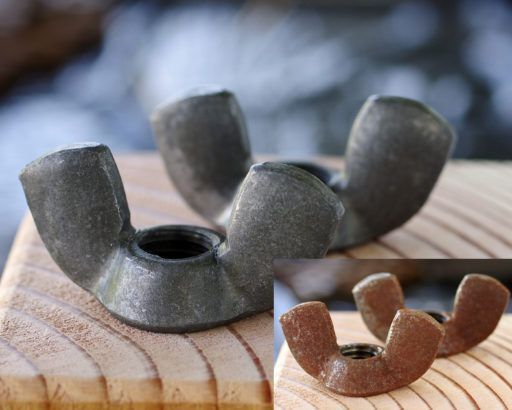
Meanwhile, many car owners either completely ignore this requirement, or try to comply with it, using improvised materials for cleaning. The fact that the effect of this is the opposite of what was expected is quite obvious and needs no comment.
Wheel disks can be kept in perfect technical and aesthetic condition only with the use of special cosmetic products that do not contain abrasives and caustic substances of acid-base origin, which destroy the varnish coating and the metal itself.
One of the leading positions in the market ranking of the respective product segment is occupied by the wheel cleaner Felgen-Reiniger Spezial.
Without damaging the material, this high-tech product easily removes dirt deposits from the machined surface and removes rust from forged rims. After a certain time, the product decomposes naturally and biologically, and its residues are removed with a stream of water supplied under low pressure.
A car with a polished body and well-groomed wheels will not only delight the eyes of you and those around you with its aristocracy, but will also last much longer than the period guaranteed by the manufacturer.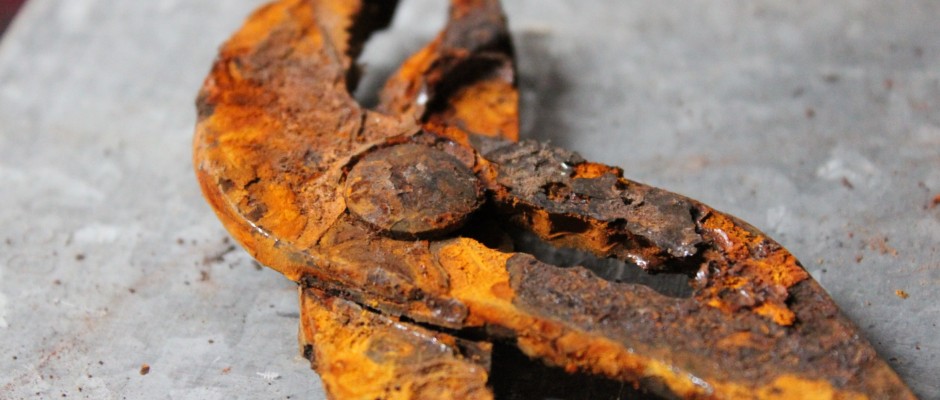
Even with the most careful use, the car body can become covered with ugly red spots that are dangerous for metal. We tell you how to remove rust from a car body with your own hands and get by with minimal costs.
The car body is made of steel. The basis of this alloy is iron, which conducts electricity well. In the presence of water, corrosion begins - oxidation, during which a loose powder is formed. Strictly speaking, electricity is needed to get rust, but it is constantly present on the car body - from the “mass”, from statics and from the potential difference at the junctions of the parts.
There are different ways to protect your car from corrosion. The most reliable is zinc coating. This metal oxidizes much more slowly and does not form rust. Manufacturers also use a phosphating primer, which forms a thin film of oxides on the body surface.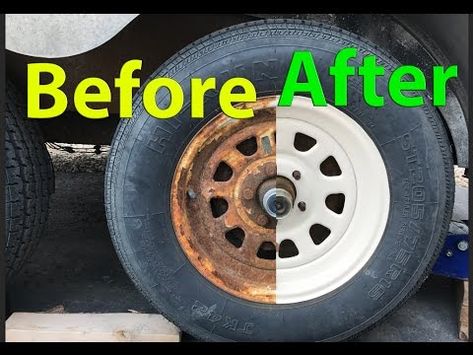 However, any paint that prevents water from getting on bare metal gives a good result. But no coating lasts forever - over time, it cracks, falls off and peels off, opening the way for rust.
However, any paint that prevents water from getting on bare metal gives a good result. But no coating lasts forever - over time, it cracks, falls off and peels off, opening the way for rust.
There are particularly vulnerable spots on the car body:
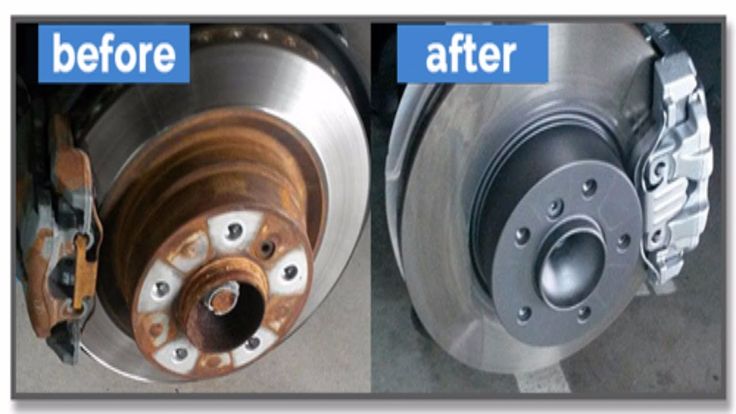 The part is already seriously damaged, you need to think about replacing it.
The part is already seriously damaged, you need to think about replacing it. First, answer a simple question - do you have the skills to work with metal and paint? If not, it is better to entrust the task to professionals. If you are able to remove rust from a car body with your own hands, first collect all the necessary tools and think over each step of the work.
Tackles small stains up to 1.5-2 cm in diameter. This method is best reserved for hidden surfaces - caustic chemicals easily penetrate into hard-to-reach places, but can leave clearly visible marks.
First remove the rust from the damaged part of the car body. For this purpose, concentrated phosphoric acid is suitable. Lubricate the rusty spot with it, and after a minute wipe it with a dry cloth.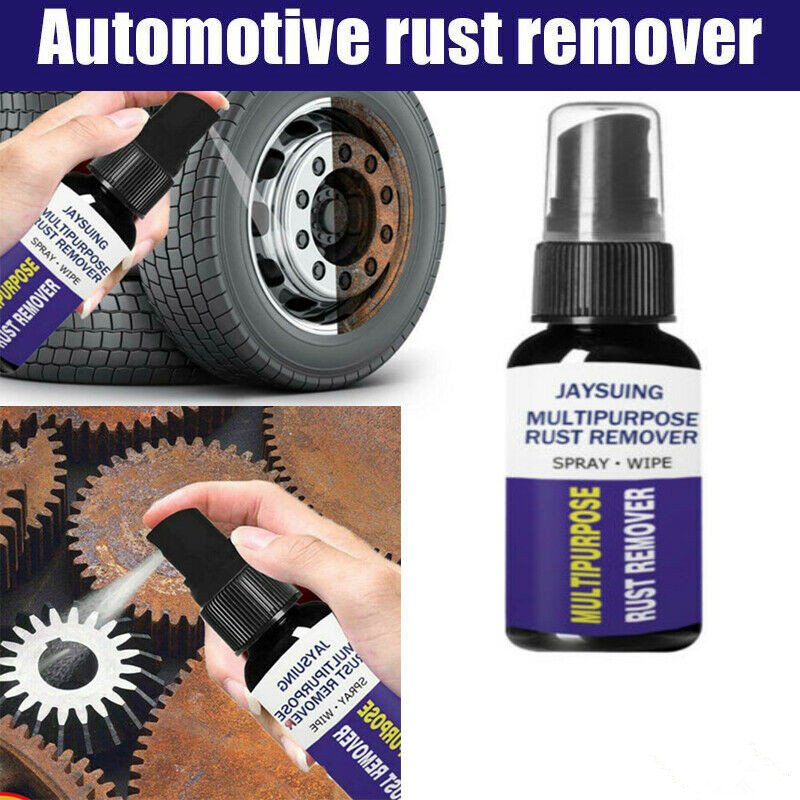 Work in a respirator, goggles and gloves so as not to burn the skin and mucous membranes.
Work in a respirator, goggles and gloves so as not to burn the skin and mucous membranes.
Treat the car body with a rust converter to stop corrosion. One of the most affordable and effective means is the BCH-1 neutralizer. It covers the affected area with a protective film, but leaves a bumpy, uneven surface that stands out in color.
You can also use a do-it-yourself galvanizing body kit, which will protect the car from further rust. A good example of such a set is Zinkor. Follow the instructions. Rinse off rust from the part, wash, dry and degrease surfaces. Soak the electrode in a special solution, connect it to a car battery and run it over the damaged metal. Corrosion will stop, and a zinc coating will appear on the body, which will differ in color and texture.
The final step is protection against re-damage. A rust stain should be painted over with Movil - a means for preserving the car body. After hardening, it turns into a film with anti-corrosion properties, which slows down the destruction of the metal and repels water.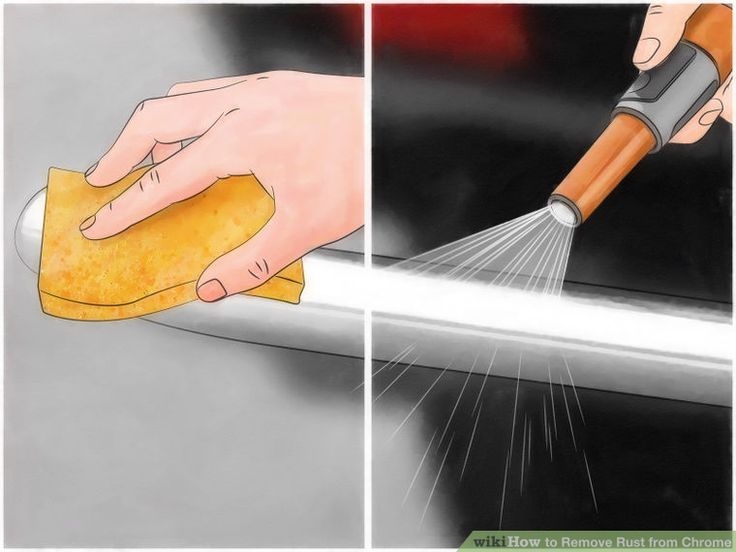 In hard-to-reach places, the procedure is repeated every 3-5 years, outside the body - annually.
In hard-to-reach places, the procedure is repeated every 3-5 years, outside the body - annually.
Classic body repair. Cope with extensive corrosion - large spots that have not yet destroyed the metal and turned into holes. Ideal for exterior panels - allows you to restore the original appearance of the machine.
It is better to remove rust from a car with a power tool - a “grinder” with a peeling brush, a grinder or a drill with a special nozzle for stripping. You can use a manual brush or sandpaper, but then the work will take much more effort and time.
Remove stains down to bare metal, but be careful not to touch the paintwork nearby. Rust is treated with acidic primer, which corrodes the last pockets of corrosion at the base of the part. Then the damaged area is covered with a phosphating compound, puttied, painted and varnished.
The finishing touch is the polishing of the entire body panel. You will remove minor defects, so the paintwork will look uniform.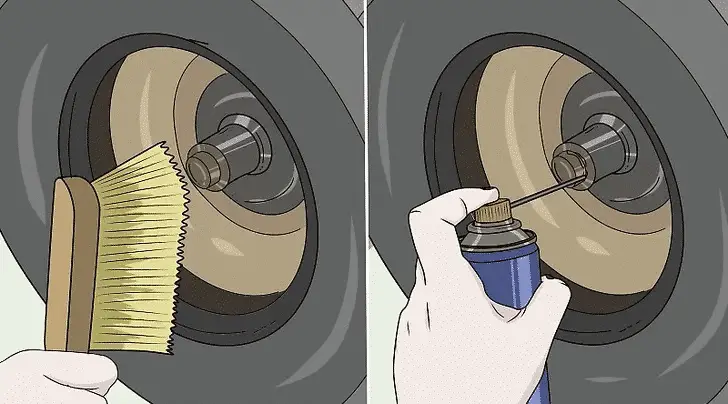 Don't forget to keep an eye on the damaged body part - if the rust comes back, you'll need a more serious repair.
Don't forget to keep an eye on the damaged body part - if the rust comes back, you'll need a more serious repair.
If the metal is already rusted through, the car can still be restored without welding. Take a mallet and gently tap the edges of the hole to loosen the plaque. Next, you need to carefully clean the stain with a brush, sandpaper, grinder or grinder.
Once the rust has been removed from the car, slightly bend the edges of the hole inward with a hammer or other suitable tool. Lubricate them with putty to get a smooth smooth edge. When they begin to set, cut out a patch of fiberglass cloth and attach to the hole. Spread generously with putty on both sides and smooth.
This method of dealing with through rust can also be used in hard-to-reach places. If the product will drain, substitute a cardboard box and hold it until the putty begins to harden - about 8-10 minutes in the summer.
After removing the corrosion center, sand the patch, cover it with primer and paint.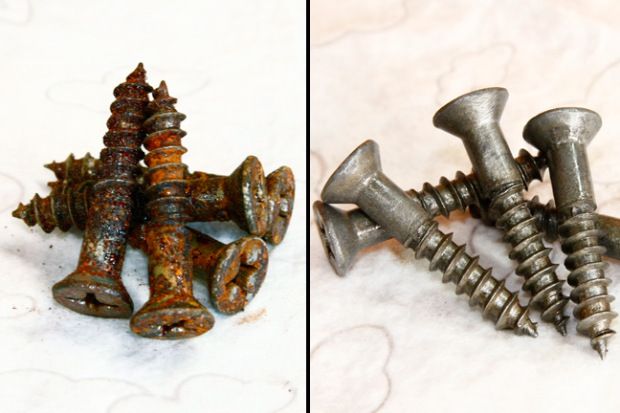 For hidden surfaces, it is better to use a rust converter and Movil. They will stop the stain from spreading for a long time, if not forever.
For hidden surfaces, it is better to use a rust converter and Movil. They will stop the stain from spreading for a long time, if not forever.
The most radical and expensive, but the most reliable way to repair. Exterior body panels change completely - they are primed and painted, choosing the right color. If rust has affected the elements of the power structure of the body, the damaged areas are cut out and welded with metal patches. Please note that replacing large sections can reduce the strength of the car - it will be impossible to predict how it will behave in an accident. Therefore, it is better to entrust serious body repair to professionals.
